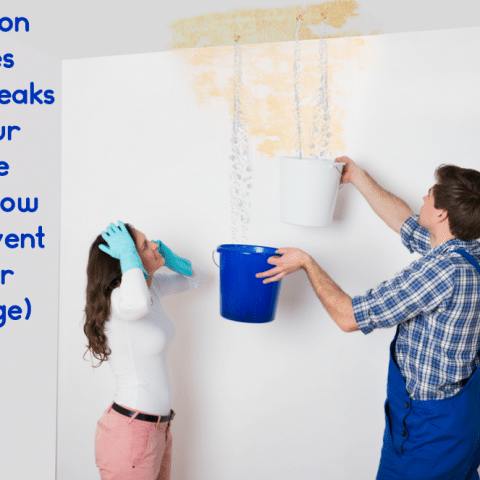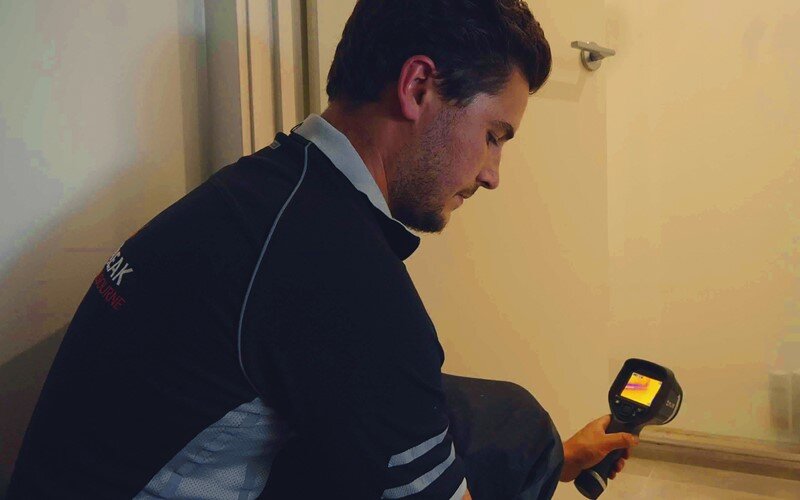What are your beliefs about Finding hidden leaks?

Early discovery of leaking water lines can mitigate a prospective disaster. Some small water leaks might not be noticeable.
1. Examine the Water Meter
Every residence has a water meter. Examining it is a surefire way that aids you discover leakages. For beginners, turn off all the water sources. Make certain no one will certainly purge, use the faucet, shower, run the cleaning equipment or dishwasher. From there, most likely to the meter and also watch if it will alter. Given that no one is using it, there must be no activities. That indicates a fast-moving leak if it moves. Also, if you identify no changes, wait a hr or two as well as inspect back once more. This implies you might have a slow-moving leak that can also be underground.
2. Check Water Usage
If you detect abrupt adjustments, regardless of your intake being the very same, it suggests that you have leakages in your plumbing system. An abrupt spike in your expense suggests a fast-moving leak.
A steady increase every month, also with the exact same practices, shows you have a slow leakage that's likewise slowly rising. Call a plumber to extensively inspect your residential property, specifically if you feel a warm location on your flooring with piping underneath.
3. Do a Food Coloring Examination
When it involves water intake, 30% comes from toilets. Examination to see if they are running correctly. Drop flecks of food color in the tank and also wait 10 minutes. If the color in some way infiltrates your bowl throughout that time without flushing, there's a leak in between the tank and also bowl.
4. Asses Exterior Lines
Don't forget to inspect your exterior water lines too. Must water permeate out of the connection, you have a loose rubber gasket. One small leakage can waste heaps of water and also spike your water expense.
5. Examine the scenario and examine
House owners need to make it a habit to inspect under the sink counters as well as also inside closets for any bad odor or mold growth. These two red flags suggest a leak so timely interest is called for. Doing regular inspections, even bi-annually, can save you from a major problem.
Check for discolorations and also damaging as a lot of devices and pipelines have a life expectations. If you presume leaking water lines in your plumbing system, do not wait for it to intensify.
Early detection of leaking water lines can minimize a prospective disaster. Some little water leakages may not be noticeable. Inspecting it is a surefire method that helps you uncover leakages. One tiny leakage can squander tons of water and also surge your water bill.
If you believe leaking water lines in your plumbing system, do not wait for it to intensify.
How to Know If Your Home Has a Hidden Leak
Water Meter Reveals Inexplicable Water Usage
If you’d like to test whether or not there’s a leak somewhere in your home, you can do this using your water meter. Here is how to conduct the test:
Don’t use any water in your home for at least 30 minutes; this also means not turning on faucets or water-using appliances.
Go outside, and check your water meter for activity.
If your water meter shows that there was activity, even though no one was using any water, this proves that there is a leak in your home.Visible Mold or Mildew Growth
Leaks behind walls create moist, dark environments that allow mold and mildew to grow and thrive. Eventually, you might see mold growth forming on the wall closest to a hidden leak.
If mold is growing in an area that receives a high amount of moisture, such as a bathroom, it may simply be an indication that better ventilation is needed. However, if you see mold growth on a wall or the ceiling in an area where you would not expect, you probably have a hidden leak.
Musty, Mildew Odor
Sometimes you might not be able to see the mold or mildew that is growing as a result of a leak. However, the smell can give the problem away just as easily. If you catch a whiff of something musty, there’s a good chance that old water is collecting somewhere in your home that you can’t see.
Stained/Warped Walls, Ceilings, or Floors
When your home soaks up water, a variety of red flags can become visible, including ceiling stains, bubbling drywall, warped walls, and sagging floors. While these issues can be caused by excess humidity, they can also be signs that a pipe or plumbing connection has started leaking behind your walls.
Inexplicably High Water Bill
After a while, you get a general sense for what your water bill should be. If you own a pool or sprinkler system, your bill will tend to be higher during summer. However, if you receive a water bill that seems especially high, and you can’t figure out what caused it, then you may have a hidden leak somewhere that’s increasing your bill.
https://www.plumbingjoint.com/blog/2019/july/how-to-know-if-your-home-has-a-hidden-leak/

As a person who reads about Hacks to detect leaks, I figured sharing that article was smart. Sharing is caring. You just don't know, you could be helping someone out. Bless you for your time. Kindly check up our website back soon.